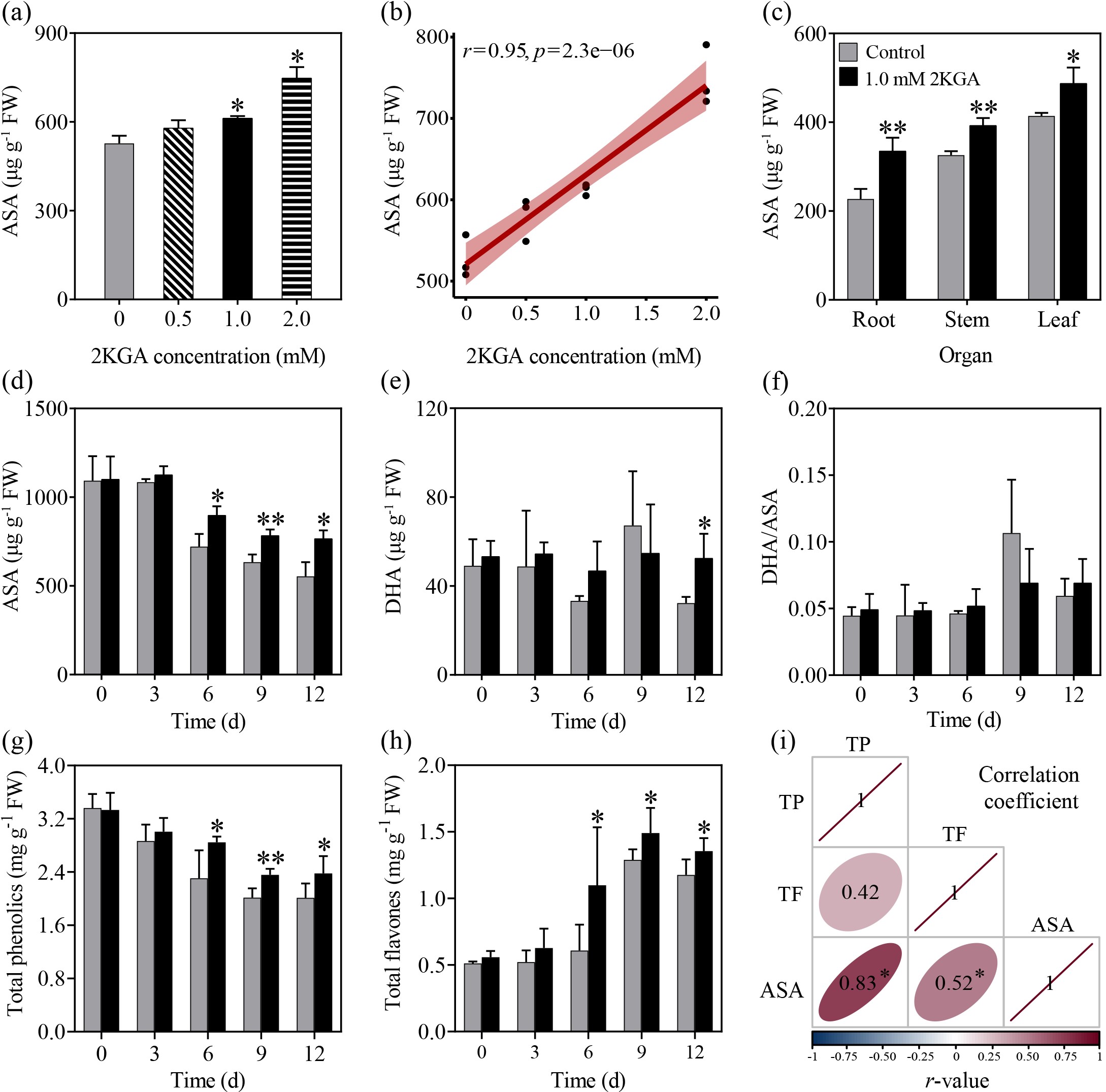
Scientists from the Institute of Applied Ecology of the Chinese Academy of Sciences have discovered a promising new use for a key intermediate in vitamin C production, demonstrating its potential to enhance plant growth and increase the accumulation of valuable bioactive compounds.
Published in Plant Physiology and Biochemistry, the breakthrough elucidates how 2-keto-L-gulonic acid (2KGA)—an industrial precursor to L-ascorbic acid (vitamin C)—interacts with plant metabolic systems to influence both primary and secondary metabolism.
2KGA is a pivotal compound in China's industrial vitamin C production, derived via a unique "two-step fermentation" method developed by Chinese scientists. This process, recognized globally for its cost-effectiveness and environmental advantages, has made China a leader in the global vitamin C market. However, its application beyond industrial synthesis has remained largely unexplored.
Led by Dr. XU Hui, the researchers have found that exogenously applied 2KGA significantly increases vitamin C levels in various plant tissues, including leaves and fruit—by over 45% on average. The findings suggest that 2KGA could function as a plant growth regulator by modulating critical steps in the vitamin C biosynthetic pathway.
To explore this hypothesis, the team conducted experiments using Brassica campestris ssp. Chinensis and the model organism Arabidopsis thaliana, and they found a clear dose-dependent relationship between 2KGA treatment and ascorbic acid (ASA) accumulation. This response was closely linked to the elevated expression of the gene encoding L-gulono-1,4-lactone oxidase (GLO)—an enzyme essential for the final enzymatic step of vitamin C synthesis in plants.
In GLO-deficient Arabidopsis mutants, the application of 2KGA did not lead to any significant increase in vitamin C levels, underscoring the indispensable role of GLO in mediating this response. Moreover, researchers observed that changes in total phenolics and flavonoids—a class of plant secondary metabolites with antioxidant and health-promoting properties—correlated strongly with vitamin C concentrations in the leaves.
Using integrated metabolomic and transcriptomic analyses, the researchers further showed that 2KGA not only stimulated vitamin C accumulation but also triggered broader metabolic shifts. This included feedback modulation of the citric acid cycle, alterations in amino acid metabolism, and changes in photosynthetic efficiency.
Notably, the expression profiles of 30 transcription factors involved in growth and secondary metabolism were significantly affected, suggesting a networked regulatory effect.
These findings provide new insights into the biological potential of 2KGA beyond its industrial role. By modulating energy production and precursor biosynthesis pathways in plants, 2KGA may serve as a novel bioresource to promote plant growth and elevate the synthesis of health-beneficial phytochemicals.
This study provides a scientific foundation for the future development of 2KGA as a plant biostimulant, with implications for both sustainable agriculture and the functional food industry.

Effect of exogenous 2KGA on ascorbic acid (ASA), total phenolics (TP), and total flavonoids (TF) in Brassica campestris ssp (Image by GAO Mingffu)

86-10-68597521 (day)
86-10-68597289 (night)

52 Sanlihe Rd., Xicheng District,
Beijing, China (100864)

